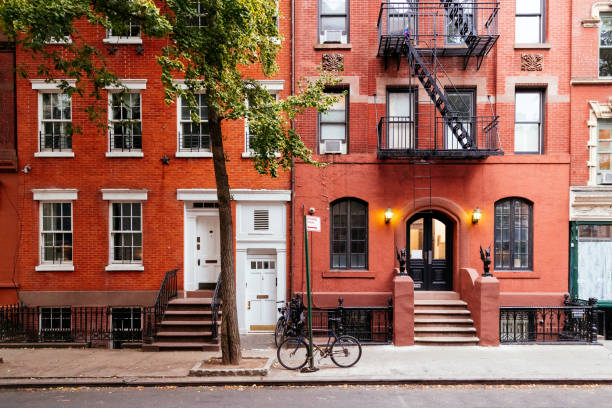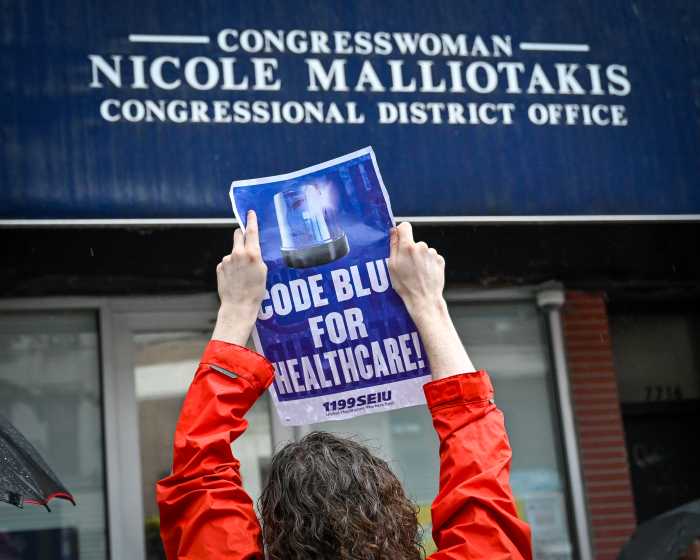By M.L. Liu
You might know the brand from the pages of some glossy magazines. Or rather, you might recognize the products if not the name.
That is because Built NY – the company that sells those whimsical wine carriers made out of neoprene, the wet suit material – has been too busy concentrating on its products to worry about building brand recognition.
The company, which began in the South Street Seaport in 2003, outgrew its space and moved to Soho earlier this year.
While formulating their business, C.E.O. Cater Weiss and creative director Aaron Lown – both of whom lived in the South Street Seaport – and principal John Swartz would gather at Pepper Jones, a Beekman St. coffee shop which served as the neighborhood water cooler. It was a place where area residents, many of them freelance commercial artists, could show up, see familiar faces and share their work.
“There was basically nothing down there,” said Lown about the area around the Fulton Fish Market, which is scheduled to move to the Bronx this month. “It [Pepper Jones] really was a community center for that neighborhood.”
“Every time we had a product, we’d show it to them. They’d comment on it,” Weiss said of the staff and patrons at the coffee shop. The people they met in the coffee shop also contributed their expertise.
“We really had world-class help from around the neighborhood: world-class photographers, copywriters, P.R. people, business advisers,” said Weiss, who noted that many people helped out for free.
Stephen Ching joined up as an advisor and investor after speaking to Weiss at Pepper Jones. The company sold its first totes in the coffee shop. The company even snagged some of its early employees from the coffee shop, looking less for specific skills than for people who exhibited a strong work ethic and a certain disposition. The company’s vice president of special projects and first employee, Jeff Smith, worked at Pepper Jones. (“He actually made a good latte,” Ching remarked.)
The company originally crowded into Weiss’ apartment in the summer of 2003 before moving into an office at 40 Peck Slip last year. Neither space had a conference room, so the company held meetings at Pepper Jones. After Pepper Jones’ owners sold their building and moved to Connecticut in 2003, a bar and café called Fresh Salt moved in.
Built NY began using Fresh Salt as an extension of its office. Weiss said he would go in there and network with patrons and employees to find help for the company.
Though Lown no longer lives in the South Street Seaport – he moved to Tuxedo, N.Y., about a year and a half ago – Weiss continues to make his home there, as he has since 1994. He said he believes the area will continue to attract people for whom high rises with doormen hold little appeal. “It’s not the East Village,” said Weiss, who describes the area as not a scene but “just a neighborhood.”
“Everyone gets to know each other [here],” said Ching, who stays in the neighborhood when he is in town.
Under a plan released by the city and Lower Manhattan Development Corp. in early June, a plaza with a reflecting pool/ice skating rink and a seating area will replace the cobblestone parking lot on Peck Slip. Several buildings on Peck Slip are currently being renovated into rental units.
The idea for the neighborhood firm originated in a leather wine satchel Lown designed for a friend, who was a wine importer. Weiss, who worked in venture capital and lived next door to Lown in the Seaport, told Lown he did not think a business could be built out of the $500 satchels.
About the same time, Lown and Swartz were collaborating on contemporary furniture designs but found they could not create a viable business around it. The two men, who had met while studying for master’s degrees in industrial design, shifted their focus when they realized a niche existed for wine accessories exhibiting great contemporary design. What wine accessories were out there had what Lown described as a “leftover aesthetic” – images of grapes and vines – that did not appeal to a younger generation of wine drinkers.
When Lown and Swartz came up with their two-bottle neoprene wine tote, after experimenting with different materials, they knew they had a hit. The tote was both fun and, at under $20, much more affordable than the leather wine satchel.
“We’d show it to our friends, and they would just go, oh my gosh, you’re going to be a millionaire,” laughed Swartz.
Weiss left his job to work on building the company with Lown and Swartz full time.
In July 2003, the company started shipping its two bottle byobag. Since then, it has released a one bottle byobag, a byo lunchbag and a six pack byobag, which has proven to be the company’s most popular product to date.
All of its bags are constructed of cushy stitched neoprene in a variety of bold colors. The material hugs bottles, ensuring that they stay cool and “clink-proof.” The lunchbag, which resembles a clamshell, can stretch to accommodate several containers of food.
Not only have a number of major household and fashion magazines featured Built NY products, the company has won awards for its designs. Fortune magazine named the two bottle byobag one of the 25 best products of 2003. In 2004, the bag received a gold Industrial Design Excellence Award, sponsored by BusinessWeek magazine. The company received another gold award this year for the byo lunchbag.
This summer, Built NY will start selling a line of baby products, including baby bottle totes and bibs made of the same material as the byobags. Next year, the company plans on releasing products in different materials, though Weiss declined to elaborate because of what he says is a very competitive market.
But whatever else this company comes out with, consumers can be sure the creators will be passionate about their products.
“We make stuff that we like, and it turns out a lot of other people like the same thing,” said Lown.
“We’d rather fail with what we’re excited about,” said Weiss.
WWW Downtown Express
































